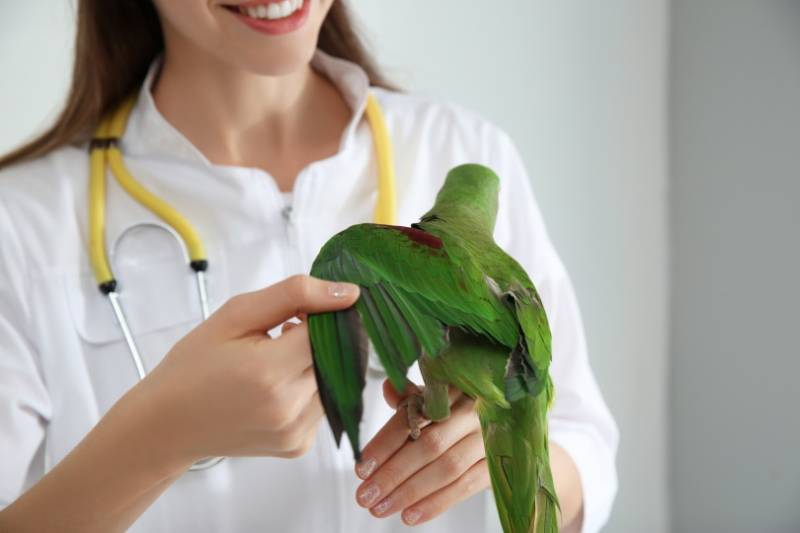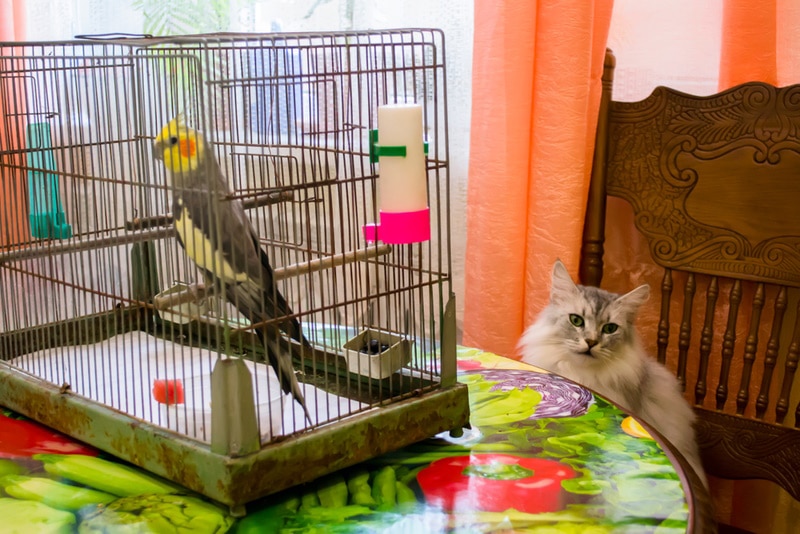How to Teach a Parrot to Talk: 7 Vet-Reviewed Steps
Updated on
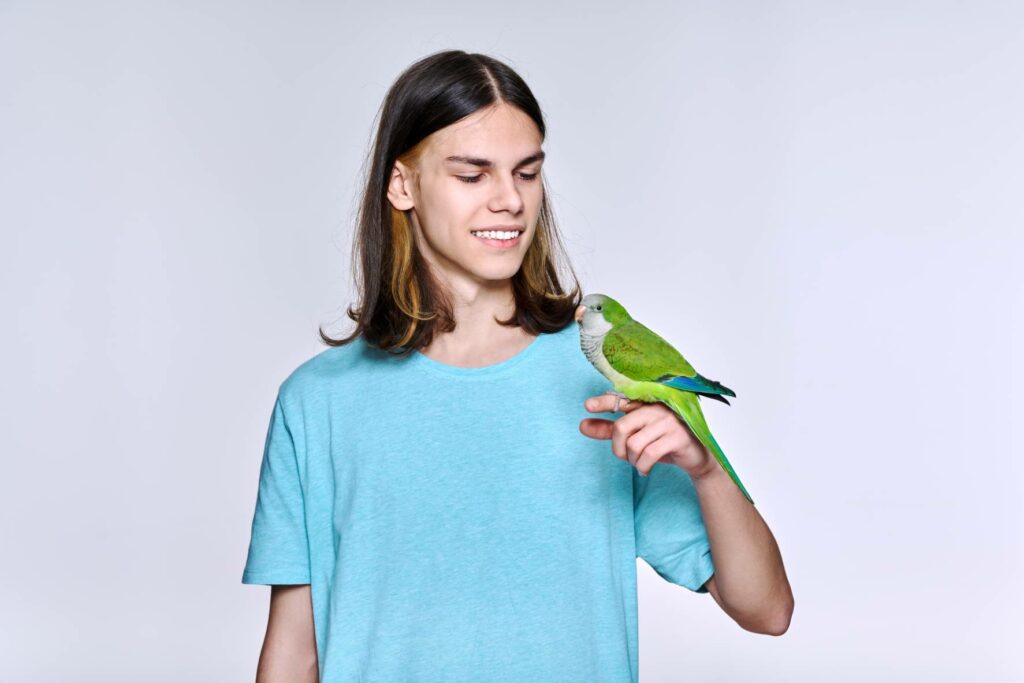
Click to Skip Ahead
If you’ve always dreamed of having a pet that can talk back to you, a parrot is the way to go. These beautiful birds can learn to imitate speech, which will certainly bring much entertainment to your life. Teaching your parrot to talk can be a bit of an undertaking, so we’ve put together this helpful guide to make it a little easier. Read on to learn more.
Before You Start
Before beginning training sessions with your parrot, there are some things you need to do first.
Research Your Parrot’s Species
Though all parrots can mimic sounds, not all parrot species have been documented mimicking human speech, so you must do your homework to ensure the species you care for can even talk. The last thing you want to do is spend hours trying to train speech to your pet who is seemingly incapable of learning to do so in the first place.
Some species commonly kept as pets that are capable of learning to talk include:1
- African Grays
- Budgerigars
- Amazon Parrots
- Eclectus
- Indian Ringneck Parakeets
- Quaker Parrots
- Cockatoos
- Macaws
That’s not to say that other parrot species cannot talk, but those listed above are the chattiest of the bunch.
Be Realistic
You must be realistic with your expectations in speech training your parrot. You can make sensible training goals once you know more about your bird’s species and their talking capabilities.
It’s also important to set sensible time-related goals or, better yet, not put a timeline on your training. Though parrots are highly intelligent, you shouldn’t expect your bird to learn to speak entire phrases a week into your training sessions.
A theory exists that some parrots are intelligent enough to know that training increases their time spent with you, and may therefore choose to actually partake in the training sessions while not speaking at all, even though they may actually be capable of doing so. This form of behavior is termed as an “intentional mistake”.
Though age has been linked as a factor for mimicry learning in song-birds, it doesn’t seem to play a role for parrots in the same way, and they seem to be able to learn words throughout their lives.
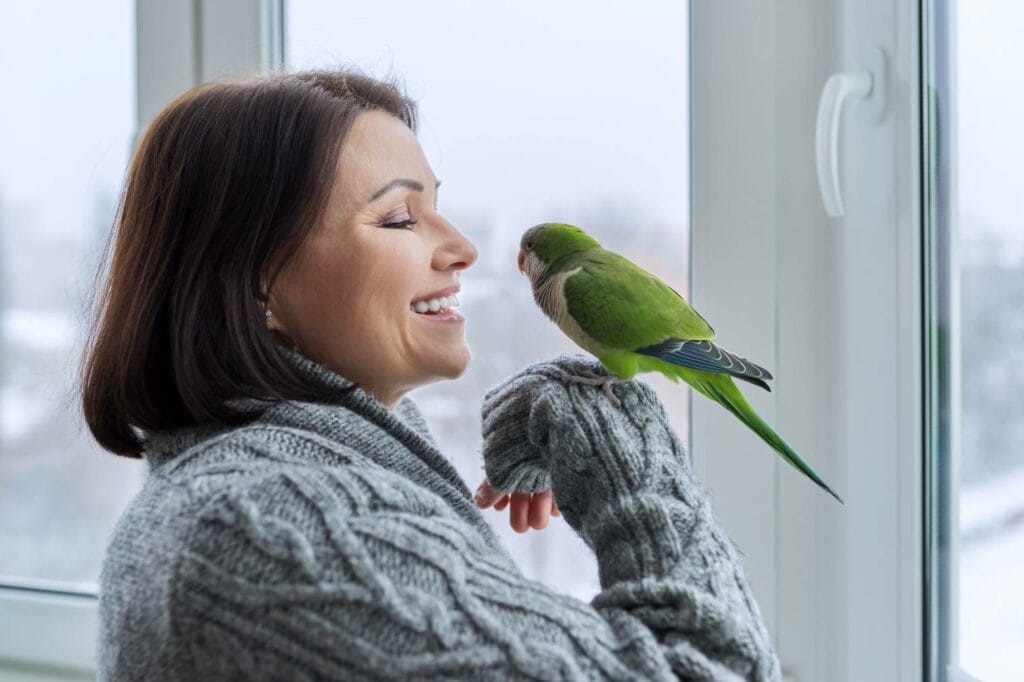
Focus on Creating a Relationship First
You can’t train your bird to speak if there is no trust between you. Spend a lot of one-on-one time with your bird, speaking in quiet and gentle tones so they can get used to your presence. Don’t force or rush this step, as it will play a big part in how successful your speech training will be. It can take a few months for your parrot to be fully comfortable around you.
How to Teach a Parrot to Talk
Though the rest of this article is written with the concept of a female parrot, the information is transferable to male parrots too. The use of female pronouns are a creative choice by the author and not an indication that these tips won’t work for males. Male parrots are often thought to be better vocalists than females, however, this information seems largely anecdotal and not statistically significant for most parrot species.
1. Start With Simple Words
As cool as it would be to have your parrot learn a long phrase right out of the gate, it’s not realistic. Begin training with simple words like “hello”, “bye-bye”, or their name. When said with enthusiasm and gusto, easy words like these will be more interesting to your parrot.
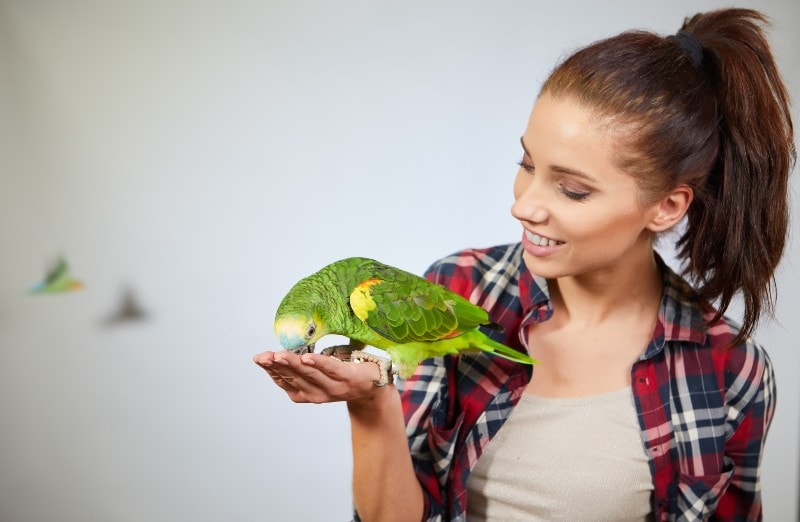
2. Talk in the Right Tone
Make sure you’re talking in a happy, upbeat tone, and try to speak using the same inflection whenever you address your pet. Speak to her as you would a three- to four-year-old child. Try using a higher pitch to help your pet grasp the words better.
3. Talk a Lot
The best way to teach your parrot to talk is by talking to her often, even outside your training periods. Parrots are highly intelligent, so even when you’re not actively trying to teach them to talk, they’re still taking it all in. The more your bird hears you talk, the more she’ll want to return the favor.
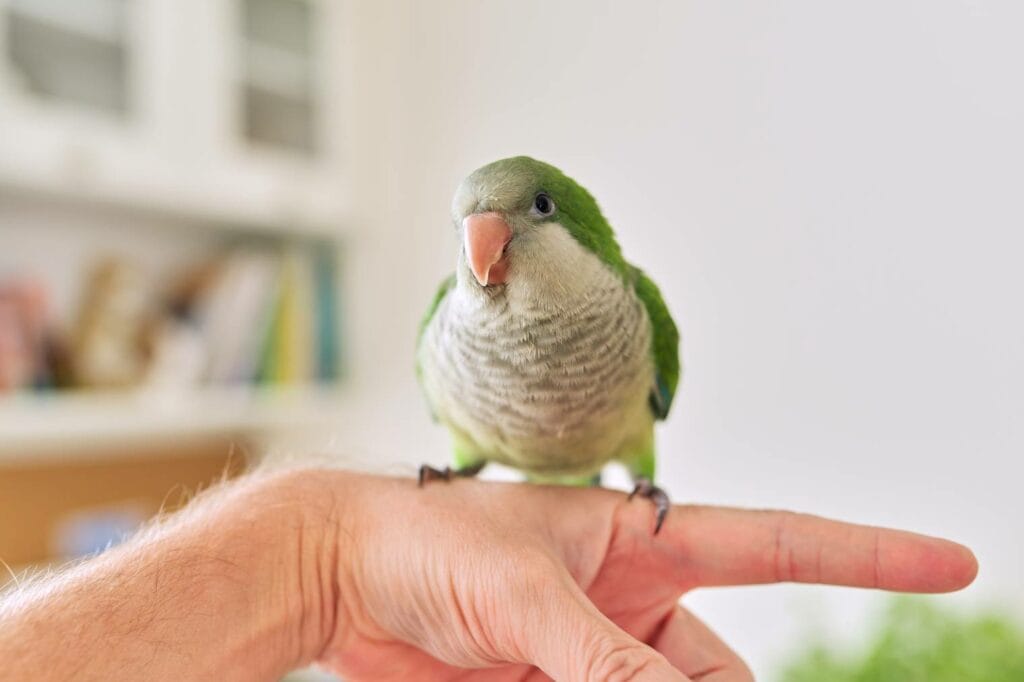
4. Offer Rewards and Praise
Keep yummy treats on hand to offer your parrot during and after training sessions. We recommend having a special bag of goodies specifically for use during training sessions. These will become “high value” to your bird and encourage her to retain your desired words and phrases. As with most animals, birds love to be told they’re doing a good job, so make sure you’re offering plenty of verbal praise as well as tasty rewards.
It’s also a good idea to say the name of the treat every time you offer your bird one. Repeat its name several times as you hand it over. So, if you’re offering a strawberry slice, say, “Strawberry. Strawberry. Strawberry.” as you’re handing it over to her.
Don’t offer treats if your bird hasn’t completed their task.
5. Associate Words With Actions
Your bird will learn to talk faster when associating words with an action or an object. For example, when you wake her up in the morning, you can say “Good morning!” or “Rise and shine!” and she will understand that these phrases are associated with morning time.
You already know to name foods as you offer them to your pet, but you can do the same with toys and other objects in her environment. When changing out her toys, name her favorites as you place them in her cage so she can start associating the toy’s name with its appearance.
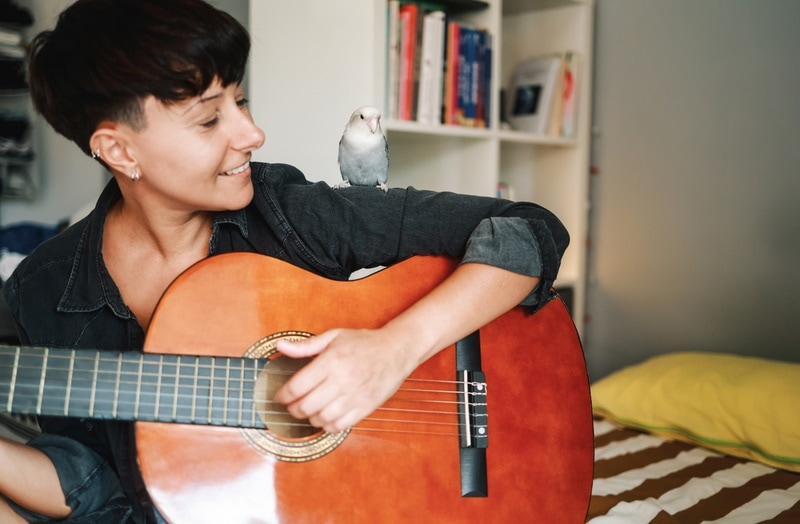
6. String Words Together
Once your parrot knows a handful of words, you can build on her skills by combining them into phrases. For example, your parrot will likely pick up greetings like “hello” pretty quickly as they’re short and punchy. You may also consider using “How are you?” as part of your daily greeting as it’s quick and easy to say.
Use the same tone and inflection when you say phrases you’d like your parrot to learn. This can make it easier for her to hear the words you’re repeating and pick up on them in the future.
We recommend only adding one or two words into phrases to ensure she doesn’t get overwhelmed.
A strategy that seems to work for some parrots is to speak both a question and an answer together. For example, some parrots are taught the phrase “What is your name? Bob”. When their owner says “What is your name?” the parrot might just complete the phrase by saying “Bob”.
7. Be Mindful of Your Words
Words said with feeling tend to be the ones that parrots remember best. Most parents would agree that the same rule applies to toddlers. When was the last time you cried out an expletive only to have your two-year-old repeat the word back to you with the same energy you used when you let it slip out? Be mindful of the words you say around your parrot, as those said with enthusiasm will be more likely to sneak into her vocabulary.
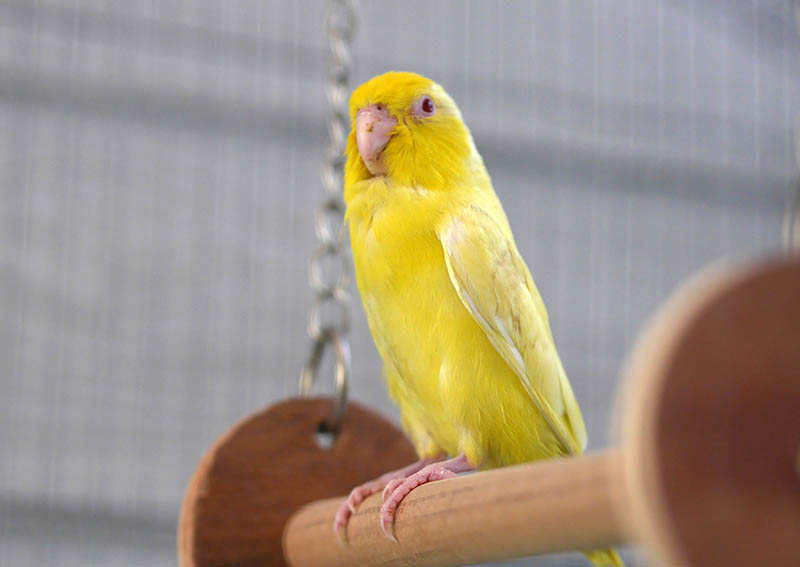
Final Thoughts
Although parrots are highly intelligent, teaching yours to talk won’t be the easiest undertaking, but it’ll be more than worth the effort. It’s important to be realistic and not set any unattainable goals or timelines for yourself. Allow your parrot to lead the training sessions, and always keep treats on hand for when she chooses to surprise you with what she has learned.
Featured Image Credit: VH-studio, Shutterstock



